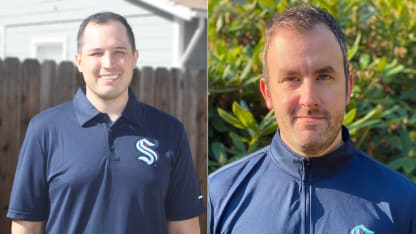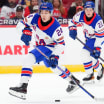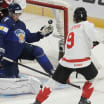Seattle expansion team turns to tech hubs to fill analytics staff roles
Kraken hire candidates from outside sports for hockey operations jobs

Mavroudis had never played hockey or worked in the NHL. But he had grown up a hockey fan in the San Francisco Bay Area, played fantasy hockey and played NHL video games. He was a technical program manager at HelloSign, a Dropbox company, in the Bay Area. His resume was on his laptop.
What the heck? Why not?
"I just kind of blindly applied," he said.
Eric Mathiasen had been watching to see if the team posted anything. Maybe something in marketing?
Mathiasen had never worked in the NHL. But he had grown up a hockey fan in Vancouver and played fantasy hockey. He was a senior technical designer at Microsoft, working at the campus in Redmond, Washington, about 15 miles from the arena where the team will play starting in the 2021-22 season.
When he saw a posting for a developer, he applied.
"I just kind of jumped at it, and then I was, like, rereading it," he said. "I was like, this is actually in hockey operations. This is totally interesting. I never in my wildest dreams thought that the career I've had would lead to helping a hockey team make decisions or draft players."
Now Mavroudis and Mathiasen are part of the Kraken, helping organize data and build tools that analysts and decision-makers will use leading up to the 2021 NHL Expansion Draft and beyond. They started in April and were announced last week, completing the Kraken analytics staff that includes senior quantitative analyst Namita Nandakumar and quantitative analyst Dani Chu.
"This is what we expect the department to look like when we drop the puck in hopefully October 2021," Kraken director of hockey strategy and research Alexandra Mandrycky said. "We're continuing to build out tools, hopefully making everyone's lives easier as we prepare for what I'm sure will be a crazy year and a crazy summer."
RELATED: [Seattle expansion team's new hires see 'dream come true']
The Kraken are far from the first team to hire a data engineer or a developer. They are following the trend throughout major professional sports.
But they wanted to prioritize technology as well as analysis; take advantage of their location in the tech hub of Seattle, near the tech hub of the Bay Area; and keep an open mind and an eye out for the best talent.
When they posted three positions -- analyst, engineer, developer -- the Kraken received about 1,000 applications combined. Mandrycky said the people applying from the tech space were hockey fans for the most part.
"I think that's what we were looking for, really people that have proven to be experts in their field and maybe are interested in sports even if they never thought about working in them," Mandrycky said. "And just having their expertise has allowed us to sort of hit the ground running."
At HelloSign, Mavroudis help build systems that collected raw data and organized it for companies to analyze.
With the Kraken, he'll do much the same thing. He'll take massive amounts of raw data in various forms from various leagues, as well as the Kraken's own internally generated data, and put it into a system that makes sense for them.
"The analogy I've used a lot is, it's kind of like how a librarian has to sort of organize books," he said. "You have the Dewey Decimal System, and you have all these ways in which you can categorize things and put them in order to make it easier for someone to go in and get the information they need."
At Microsoft, Mathiasen helped develop software and tools that showcased data for companies to analyze.
With the Kraken, his job will be similar. He'll take the data Mavroudis has organized and present it in a way that is more easily accessible and digestible.
"If John's kind of the behind-the-scenes guy, I'm kind of the visual guy," Mathiasen said. "He's, like, cataloguing all this information for me to be able to display at the end of the day."
That's important so the analysts can spend more time analyzing.
"It allows us to move a lot quicker as we sort of develop models and metrics and those sorts of things," Mandrycky said.
It's even more important now. The coronavirus pandemic has affected leagues and disrupted travel, so the Kraken might have to rely more on data and video as they make key decisions.
Puck and player tracking technology is on the horizon for the NHL as well. Teams will be provided with a whole new stream of data from sensors in pucks and on players, and it will be up to the teams to find an analytical edge.
Mavroudis' cataloguing and Mathiasen's presentation will be top secret.
"Everyone will be working on kind of their own sorts of things," Mandrycky said with a laugh, "and no one will be able to talk about it."
Photos courtesy of Seattle Kraken

















